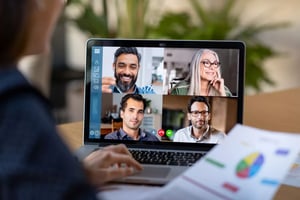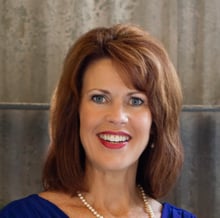Pivoting, redirecting, course correcting, shifting, transforming. Whatever word you want to use for what we’re doing right now, one thing is for sure—we are changing the way we do business. And while we may all have different words for it, there is one thing we have in common: We’re moving forward.
In the current situation--especially for those trying to reach senior living and long-term care operators who are right now experiencing extraordinary challenges—customer meetings, conferences, and trade shows have become, for the time being, no longer possible. But dedicated marketers are moving forward along a different path, namely that of virtual events.
Here are some key issues to keep in mind when making the shift to virtual events
- Virtual Events Require Hyper-Targeting Content

When hosting a typical 1-day, in-person event in the long-term care or aging services space, you might have sessions and tracks that draw a variety of titles. You may have nurses attending clinical sessions while administrators are focused on attending sessions covering regulatory changes—all at the same live event. In the virtual online learning world, you need to be hyper-targeted in your content. Using the example above, you’d need to create separate webinars for nurses and separate webinars for administrators or be confident the webinar topic is salient for both audiences. - Give Extra Attention to Webinar Titling and Description
The last thing you want to do is have someone register for your webinar and then find it to be not applicable to their specific job needs. You not only risk losing them for that event, but for future ones as well. In the live event space, there is more personal interaction and networking that might lead an attendee to one session over another. You don’t have that luxury online so you need to be very specific and on point with your titling and descriptions. - Holding Their Virtual Attention
At a live event, you might offer an event-ending raffle in order to keep attendees engaged and present throughout. But how to you keep them engaged online until the end? You can consider a midway offer as well as an event-ending offer. The offer could be an online raffle, a value-added content offering, or even mid-webinar poll that can offer attendees some insight that they perceive as valuable. - Increased Cost Effectiveness and Inclusivity
The cost of attending live events can be prohibitive to some team members in the long-term care and aging services fields. Holding a virtual event makes it more accessible to some who may not otherwise be able to attend due to budget or time constraints. There’s no travel time, no lodging costs, and no meal allowances. - The Advantage of Currency
When someone prepares for a live event, the information they present is current as of that moment. However, with a virtual event, you have a better opportunity for up-to-the minute content through live polls, social media, live chat, etc.
So, in speaking of the power of virtual events, let’s focus on one of the most effective online events: The Webinar for CE Credit
One of the most effective and engaging virtual events you can add to your strategic toolkit is the webinar offering continuing education credits (CE). A carefully targeted and professionally developed virtual event can give you an increased flexibility in coverage as well as a greater ability to be very intentional about who you want to draw to your program. But there are important requirements to prepare for in creating and leveraging a CE program, typically:
- Abstract
- Goal statement
- Targeted audience
- State-specific accreditation rules
- Measurable objectives
- Tracking and verification of participation
- Delivery of post-event evaluations
- Certificate creation and delivery
- Back-end reporting
The bottom line is that offering CE credit most certainly makes your virtual event more attractive to your customer and more effective for you, but if you don’t have the staff, time, or expertise, it can be a steep hill to climb and your energies are probably better spent elsewhere.That’s where Quantum Age Collaborative comes in.We became CE experts so you don’t have to.You do what you do best and we’ll do what we do best—the heavy lifting of building a CE program.
 assuredness is that this reason holds true for most of us. One of the many challenges we face in this era of health care is accomplishing this task while meeting the myriad requirements necessary to be paid for our services.
assuredness is that this reason holds true for most of us. One of the many challenges we face in this era of health care is accomplishing this task while meeting the myriad requirements necessary to be paid for our services.